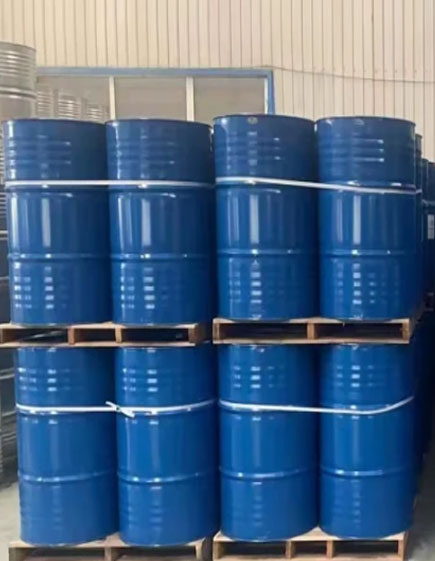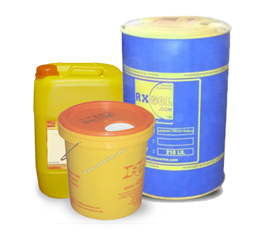Alphabets Search
Product Search
Categories
- --None--
- Agriculture-94
- Air Lines-36
- Asphalt Release / Products-90
- Automobiles-41
- Ballast Tank Chem-23
- Boiler Chemicals-42
- Carbon Coal Charcoal-26
- Clean Air deodorizer-24
- Construction Chem-67
- Coolant Glycol Antifreeze-27
- Cooling Water Chemical-43
- Corrosion Inhibitor-44
- Deck cabin galley Maintenance-25
- Degreaser-10
- Detergent & Soap-12
- Drain Clean Products-29
- Drilling Fluids & Mud Oil Field chemicals-81
- Electrical Cleaner-30
- Engine room Maintenance-16
- Evaporator Treat-51
- Floor Care ( Polish / Cleaner ) -13
- Foundry Ind Chemicals-54
- Fuel Treatment-70
- Gasses-66
- GREASES-92
- Hand Wash / Personal care-14
- Hold Solution-22
- House / HOTEL & CATERING-15
- Lab Chemical-60
- Lab Equipment-61
- Laundry Chemicals-26
- Leather Chem-96
- Medicine-95
- Metal Treatment-68
- Oil Spill Chem & Accessory -17
- Paint and Cleaning solvent-18
- Passivation-38
- Power Plant / Heavy Industries-37
- Pump & Accessory-21
- Radiator and AC coil cleaner-39
- Railway Maintenance-35
- Raw Chemicals-19
- RIGS Oil Field-34
- RO Chemicals-33
- Rubber Chemicals-93
- Rust Clean & Protect-28
- Safety Item-64
- Scale Remover-11
- Sewage Chemicals Treatment-40
- Stains Indicator Reagents-69
- Swimming Pool & Spa-31
- Tank Cleaner-20
- Test Kit For Water-62
- Textiles / Looms-91
- Wall Wash Test Kit-63
- Water Filter, Vessel, Softner, Accessory-32
- Water Treatment-40
- Wrench & Tools-65
Activated Carbon Granular
Granular Activated Carbon Used in ETP/Waste Water Treatment Grade & Etc
25.00Kg Granules
Product Description
Product Technical bulletin
ACTIVATED CARBON
DESCRIPTION
Activated Carbon is a very active product with a high proportion of medium and large pores. It is recommended for the adsorption of large quantities of high molecular weight substances.Granular Activated Carbon has a relatively larger particle size compared to powdered Activated Carbon and consequently, presents a smaller external surface. Diffusion of the adsorbate is thus an important factor. These carbons are therefore preferred for all absorption of gases and vapors as their rate of diffusion are faster. Granulated carbons are used for water treatment, deodorization and separation of components of flow system and is also used in rapid mix basins. GAC can be either in granular or extruded form.
PROPERTIES
|
Physical
Appearance: Dark grey/black powder |
Chemical
Type: carbon Charcoal |
APPLICATION
The use of granular Activated Carbon in wastewater treatment systems is a proven process for removal of organic compounds. As a tertiary treatment method, carbon adsorption and regeneration have been used to process domestic wastewaters contaminated with industrial wastes of organic origin as well as biologically treated waste waters. Activated Carbon, when contacted with water containing organic material, will remove these compounds selectively by a combination of adsorption of the less polar molecules, filtration of the larger particles, and partial deposition of colloidal material on the exterior surface. The quantity of Activated Carbon required will depend upon the degree of contamination.
Activated carbon is useful in drinking water treatment because it acts as an adsorbent , and can effectively remove particles and organics from water. These organics are of great concern in water treatment because they react with many disinfectants, especially chlorine.
Activated Carbon is a very active product with a high proportion of medium and large pores high surface area 1050 meter square per gram. It is recommended for the adsorption of large quantities of high molecular weight substances.
An amorphous from of carbon characterized by high adsorptivity for many gases, vapors, and collodial solids.
Used for water and air purification, solvent recovery, waste treatment, removal of sulfur oxide from stack gases and “clean” rooms as deodorant, and for air conditioning.
| GRADE | RX AW-200 | RX AW – 250 | RX AW – 300 | RX AW – 350 | RX AW – 400 | RX AW – 450 |
| MB VALUE mg/gm | 200 (±10) | 250 (±10) | 300 (± 10) | 350 (± 10) | 400 (± 10) | 450 (± 10) |
| pH OF 1% WATER EXTRACT | 6 to 7 | 6 to 7 | 6 to 7 | 6 to 7 | 6 to 7 | 6 to 7 |
| ASH % MAX | 4 | 4 | 4 | 4 | 4 | 4 |
| SOLUBLE ASH % MAX | 1 | 1 | 1 | 1 | 1 | 1 |
| IRON ppm MAX | 250 | 200 | 200 | 200 | 200 | 200 |
| MOISTURE % MAX | 5 to 10 | 5 to 10 | 5 to 10 | 5 to 10 | 5 to 10 | 5 to 10 |
| ACID SOLUBLE % MAX | 2 | 2 | 2 | 2 | 2 | 2 |
| WATER SOLUBLE % | 1 | 1 | 1 | 1 | 1 | 1 |
| L.O.D % MAX | 7 to 10 | 7 to 10 | 7 to 10 | 7 to 10 | 5 to 10 | 5 to 10 |
| CHLORIDES ppm | USP | USP | USP | USP | USP | USP |
| % KMnO4 ADSORPTION | 55 | 65 | 75 | 85 | 90 | 95 |
| IODINE VALUE mg/gm | 800 (± 50) | 850 (± 50) | 1000(± 50) | 1100(±50) | 1150 | 1200 |
| METHANOL TEST | No Turbidity | No Turbidity | Passes | Passes | Passes | Passes |
| PARTICLE SIZE | 85 % Passing through 250 mesh size | 85 % Passing through 250 mesh size | 85 % Passing through 250 mesh size | 85 % Passing through 250 mesh size | 85 % Passing through 250 mesh size | 85 % Passing through 250 mesh size |
MIXING AND HANDLING
Fluids may be filtered through Activated Carbon or the Activated Carbon may also be added directly to a contaminated fluid to remove impurities. It is advisable to use a dust mask and eye protection while mixing all powdered products.
| WHMIS: Not controlled | TDG: Not regulated | PACKAGING: 25 Kgs, 50 Kgs. |
An amorphous from of carbon characterized by high adsorptivity for many gases, vapors, and collodial solids.
Used for water and air purification, solvent recovery, waste treatment, removal of sulfur oxide from stack gases and “clean” rooms as deodorant, and for air conditioning.
How Carbon Filters Work ?
Activated carbon manufacturer, supplier and exporter. We are manufacturing Granular Activated Carbon with various Iodine Adsorption value (mg. /gm.): 450 IV – 1200 IV
We manufacture and export Activated Carbon to our clients that are formulated using premium quality chemicals and according to the international quality standards. These are used for the reduction of the impurities related to taste, odour and colour inorganic chemicals. Our ranges of products are fully tested by quality analysts to ensure that the defect free range is supplied to our customers. We offer these at cost effective prices.
Product label

Request for Quote and Get Heavy Discount on Price

